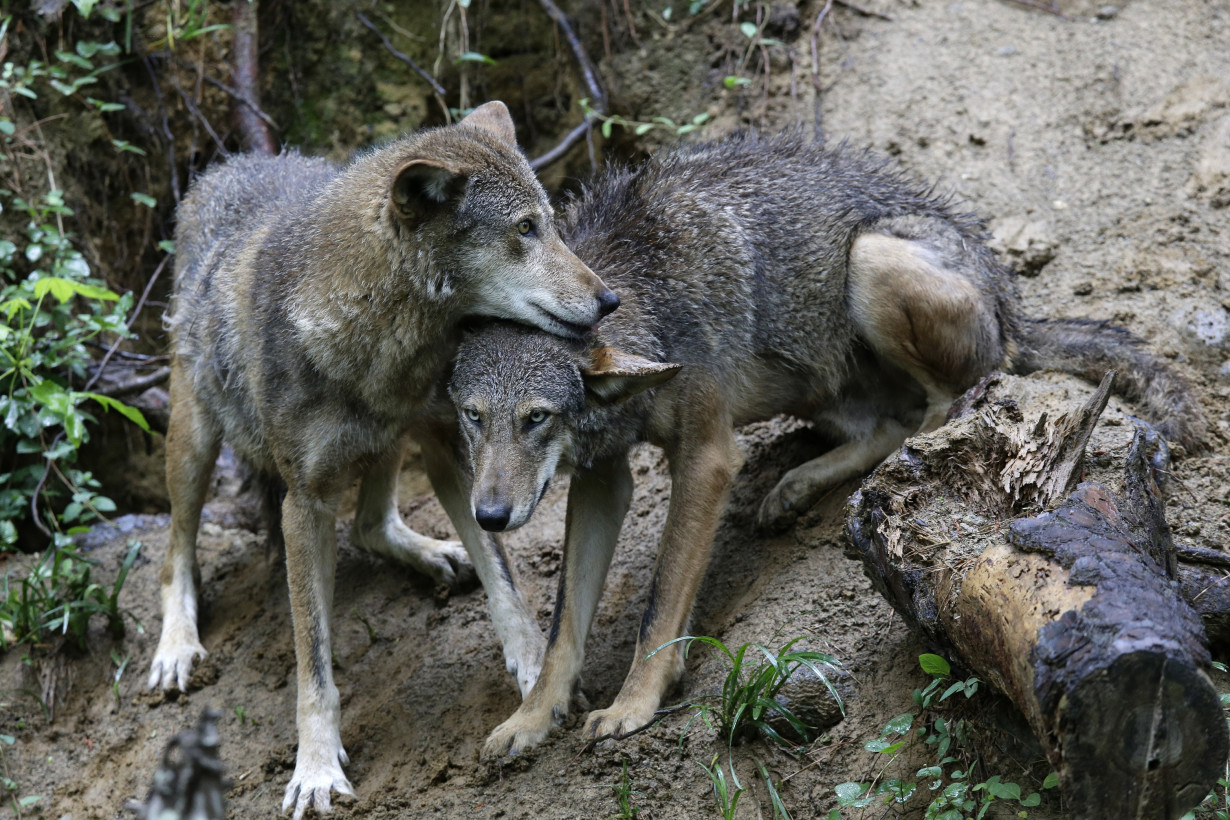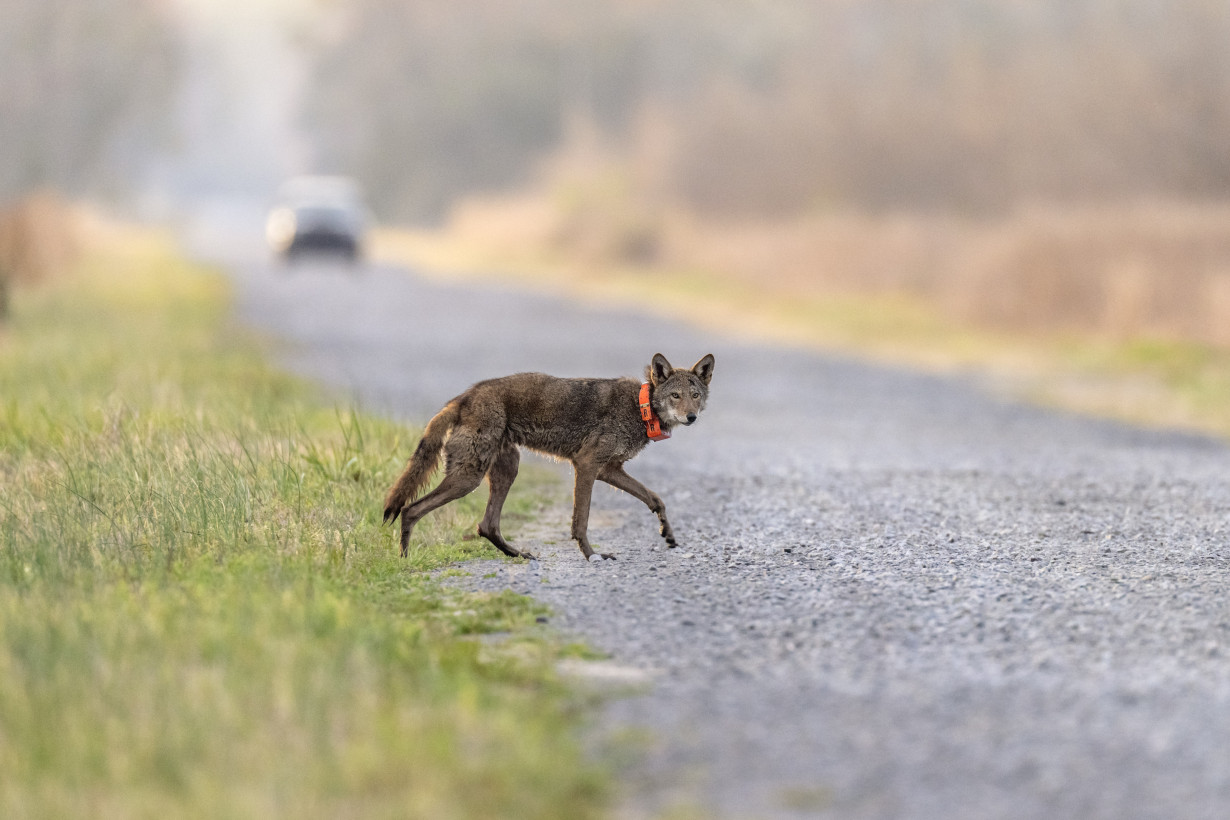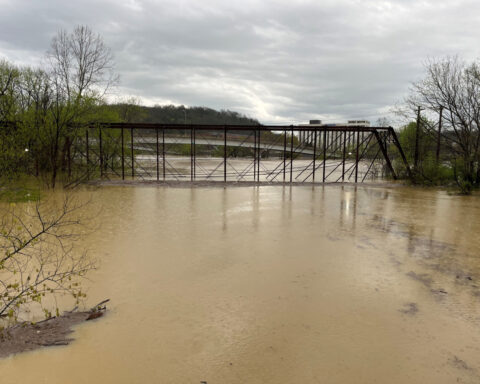WAKE FOREST, N.C. (AP) — The endangered red wolf can survive in the wild, but only with “significant additional management intervention,” according to a long-awaited population viability analysis released Friday.
The U.S. Fish and Wildlife Service also released an updated recovery plan Friday for “Canis rufus” — the only wolf species unique to the United States. It calls for spending nearly $328 million over the next 50 years to get the red wolf off the endangered species list.
“This final revised recovery plan will help the conservation and survival of the Red Wolf, ensuring these endangered canids endure in the wild for future generations," Interior Department Assistant Secretary for Fish and Wildlife and Parks Shannon Estenoz said in a news release.

But the announcement comes with a lot of caveats. The viability analysis says it will take drastic reductions in gunshot and vehicle deaths, stepped-up efforts to prevent wolf-coyote mixing, and creative methods to increase reproduction in the wild and captive wolf populations.
As of August, Fish and Wildlife said the known and collared wild population was 13, with a total estimated wild population of 23 to 22 — all on and around two federal reserves on the North Carolina coast.
“Despite active current management of this very small population, declines in abundance will likely continue in the face of persistent threats including high anthropogenic (human-caused) mortality and continued hybridization with coyotes,” the study said.
If releases from the captive breeding program were to cease, extinction of the North Carolina population will likely take place in two to three decades.
The red wolf once roamed from central Texas to southern Iowa and as far east as Long Island, New York. But generations of persecution, encroachment and habitat loss reduced them to just a remnant along the Texas-Louisiana border.
Starting in 1973, the year Congress passed the Endangered Species Act, the last wolves were pulled from the wild and placed in a captive-breeding program. In 1980, they were declared extinct in the wild.
But in 1987, the agency placed four breeding pairs in the 158,000-acre Alligator River National Wildlife Refuge. Another “non-essential experimental population” was later planted in the Great Smoky Mountains National Park, but was declared a failure in 1998.
The Alligator River population thrived, growing to as many as an estimated 130 wolves by 2012. But gunshot deaths and a 2014 decision to cease releases from the captive population, among other factors, caused the numbers to plummet to as low as seven wild wolves in recent years.
According to the recovery plan, the first update in around three decades, additional wild populations “are necessary for redundancy and, therefore, Red Wolf viability.” But that will need to include federal, state, municipal and private land.
“We have not yet identified locations for establishing new Red Wolf populations,” the report said.
In early August, Fish and Wildlife settled a federal lawsuit by a coalition of conservation groups, promising regular releases of the wolves from the captive population — which currently stands at around 270 — over the next eight years.
But the viability study cautioned that such releases be done very carefully, so as not to reduce the genetic diversity within the captive-bred population. If the program could be expanded to 300 to 400 animals and the reproductive success can be increased by 15%, the authors said, “gene diversity loss in this valuable source population can be reduced.”
Two of the biggest hurdles to wolf recovery are gunshot deaths and interbreeding with coyotes.
The viability study authors suggest a target of reducing gunshot and vehicle deaths by half, if possible, and an annual sterilization rate of 10% of the “intact coyote population each year for up to 25 years.” Fish and Wildlife has fitted the wild wolves with orange reflective collars to help distinguish them from coyotes, and has been working with locals to capture and sterilize coyotes.
They also recommend splitting up unsuccessful breeding pairs and breeding the wolves younger.
“The analytical results presented here suggest that recovery of red wolves in the wild can be achieved – and can perhaps be realized in 40 to 50 years if conditions are right,” the population study said. “However, success will likely require substantial management efforts beyond many of those currently implemented ..."
Ramona McGee, a lawyer with the Southern Environmental Law Center, said the recovery plan “remains very high level and lacks detail about specific short-term actions. “ But, she added, “we are encouraged the Service took to heart our concerns about better identifying recovery criteria.“

 Trump has begun another trade war. Here's a timeline of how we got here
Trump has begun another trade war. Here's a timeline of how we got here
 Canada's leader laments lost friendship with US in town that sheltered stranded Americans after 9/11
Canada's leader laments lost friendship with US in town that sheltered stranded Americans after 9/11
 Chinese EV giant BYD's fourth-quarter profit leaps 73%
Chinese EV giant BYD's fourth-quarter profit leaps 73%
 You're an American in another land? Prepare to talk about the why and how of Trump 2.0
You're an American in another land? Prepare to talk about the why and how of Trump 2.0
 Chalk talk: Star power, top teams and No. 5 seeds headline the women's March Madness Sweet 16
Chalk talk: Star power, top teams and No. 5 seeds headline the women's March Madness Sweet 16
 Purdue returns to Sweet 16 with 76-62 win over McNeese in March Madness
Purdue returns to Sweet 16 with 76-62 win over McNeese in March Madness








